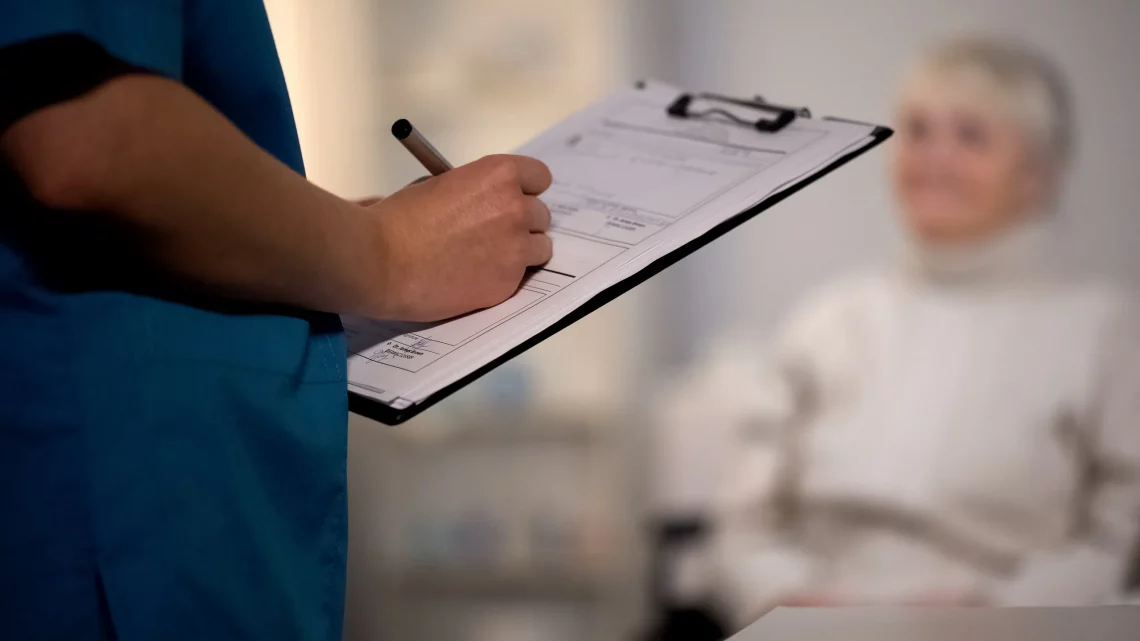Falls are a common cause of injury and death, and they are also one of the most common causes of preventable hospital admissions. In this article, we will explore some risk factors for falls, and discuss how nursing diagnoses and care plans can help identify and address these risks.
Table of Contents
What are the risk factors for falls?
Falls are the number one cause of preventable death in older adults. Risk factors for falls include age, poor vision or balance, weak muscles, medications, alcohol use, and a sedentary lifestyle.
Nursing diagnoses related to falls include pre-existing conditions (such as arthritis), biomechanical problems (such as poor balance), and dementia. Care plans for falls depend on the specific risk factors and the individual’s health condition. For example, a person with diabetes may need to maintain better blood sugar control to reduce the risk of falls. In general, care plans for falls involve teaching the individual about their risk factors and how to correct them.
How can nursing diagnoses and care plans help prevent falls?
Nursing diagnoses and care plans can help prevent falls by identifying risks and providing interventions to reduce those risks. This includes identifying conditions and therapies that may increase the risk of falls, as well as recognizing when a patient is at high risk for falling and developing a care plan to manage that risk.
Some common nursing diagnoses that may be associated with falls include:
Falls Risk Assessment:
This assessment identifies factors that may increase the risk of falling, such as age, vision impairment, obesity, poor balance, or history of falls. It also determines the patient’s level of risk and sets goals for reducing that risk.
Prevention/Reduction Intervention Plan:
The prevention/reduction intervention plan outlines specific steps to take to reduce the risk of falls. These might include modifying lifestyle choices, using assistive devices, participating in physical therapy, or receiving treatments for conditions that may lead to falls.
Follow-Up Monitoring Plan:
After taking steps to reduce the risk of falls, it’s important to monitor progress regularly. This follow-up monitoring plan helps ensure that patients are taking the steps necessary to keep themselves safe and avoid further injuries.
Falls Assessment and Evaluation:
This evaluation is performed after a fall to determine the cause and extent of the injury. It can also help identify any therapies or treatments that may be necessary to prevent future falls.
Rehabilitation Plan:
If a patient suffers significant injuries as a result of a fall, he or she may require long-term rehabilitation. This plan outlines the specific therapies and activities that will be required to help the patient regain his or her functional abilities.
Home Care Plan:
If a patient is able to live at home, it’s important to have an appropriate home care plan in place. This plan will outline the specific tasks that must be done each day to help the patient stay safe and healthy at home.
Relationship of Risk and Protection:
This assessment helps identify individuals who are at high risk for falls and develop a care plan to protect them. This may include modifying activities or medications, installing safety devices, or referring the patient to a specialist.
Risk stratification:
This assessment helps identify patients who are at high risk for falls and assigns them a level of risk. This may help determine which patients require close follow-up, and which patients can be monitored more loosely.
Fall Screening:
A fall screening is a test that’s performed to identify risk factors for falls. This can include questions about age, balance, medications, and history of falls.
Supportive and Rehabilitative Services:
If a patient is at high risk for falling, he or she may require support and rehabilitative services. These services may include physical therapy, occupational therapy, speech therapy, and home health care.
Emergency Services:
If a patient falls and experiences serious injuries, he or she should seek emergency services. These services can provide immediate treatment for injuries and help prevent further falls.
Nursing Safety:
Always be aware of your surroundings and take precautions to avoid falling. This includes wearing appropriate shoes and clothing, using good balance, and staying alert in busy settings.
Patient Safety:
Always be attentive to your patient’s needs and keep him or her safe. This includes following safety guidelines when performing procedures, providing accurate information, and monitoring patients closely.
What to do if a fall occurs
If you are caring for a patient who falls, it is important to be aware of the risk for falls and to know what to do if a fall occurs. Falls are one of the most common causes of injury in older adults and can be very serious. Nurses play an important role in preventing falls by recognizing the risk for falls and providing care plans that are tailored to the individual patient.
Falls are a major cause of injury in older adults and can be extremely serious. Recognizing the risk for falls and providing care plans that are tailored to the individual patient are critical steps in preventing falls.
Nurses often provide care plans that include instructions on how to prevent falls, as well as instructions on how to respond if a fall does occur.
Some common care plans include:
- Assessment: The nurse assesses the risk for falls and provides instruction on how to prevent falls.
- Education: The nurse provides information on falls, safe living, and ADLs.
- Rehabilitation: The nurse assists with rehabilitation goals related to preventing falls.
- Accessibility: The nurse makes sure the patient’s home is accessible and includes fall prevention in-home care plans.
- Nursing Home Assessment: The nurse conducts an all-encompassing assessment of the resident’s risk for falls and provides a care plan accordingly.
- Nursing Home Follow-Up: The nurse follows up with residents after a fall to ensure they are following their care plan and to provide support.
- Assisted Living/Home Health Services Assessment: The nurse assesses the ability of residents to live independently in an assisted living or home health setting and provides a care plan accordingly.
- Mobility/Gait Assessments: The nurse conducts gait assessments to identify mobility limitations and provide appropriate accommodations.
In addition, nurses may also provide other interventions, such as physical therapy, counseling, or assistive devices.
If a fall does occur, it is important to stay calm and assess the situation. The patient is alert and able to speak, and ask if he or she is injured. If the patient is not alert or cannot speak, find someone who can help you.
Conclusion
Falls are a leading cause of injury and death in people over the age of 65, and they are also the number one cause of hospitalization in this age group. Injuries from falls can lead to serious health problems, including fractures, head injuries, spinal cord injuries, and psychological trauma. It is therefore important for nurses to be familiar with risk for falls and know how to identify them and provide care that will help prevent them from happening.






